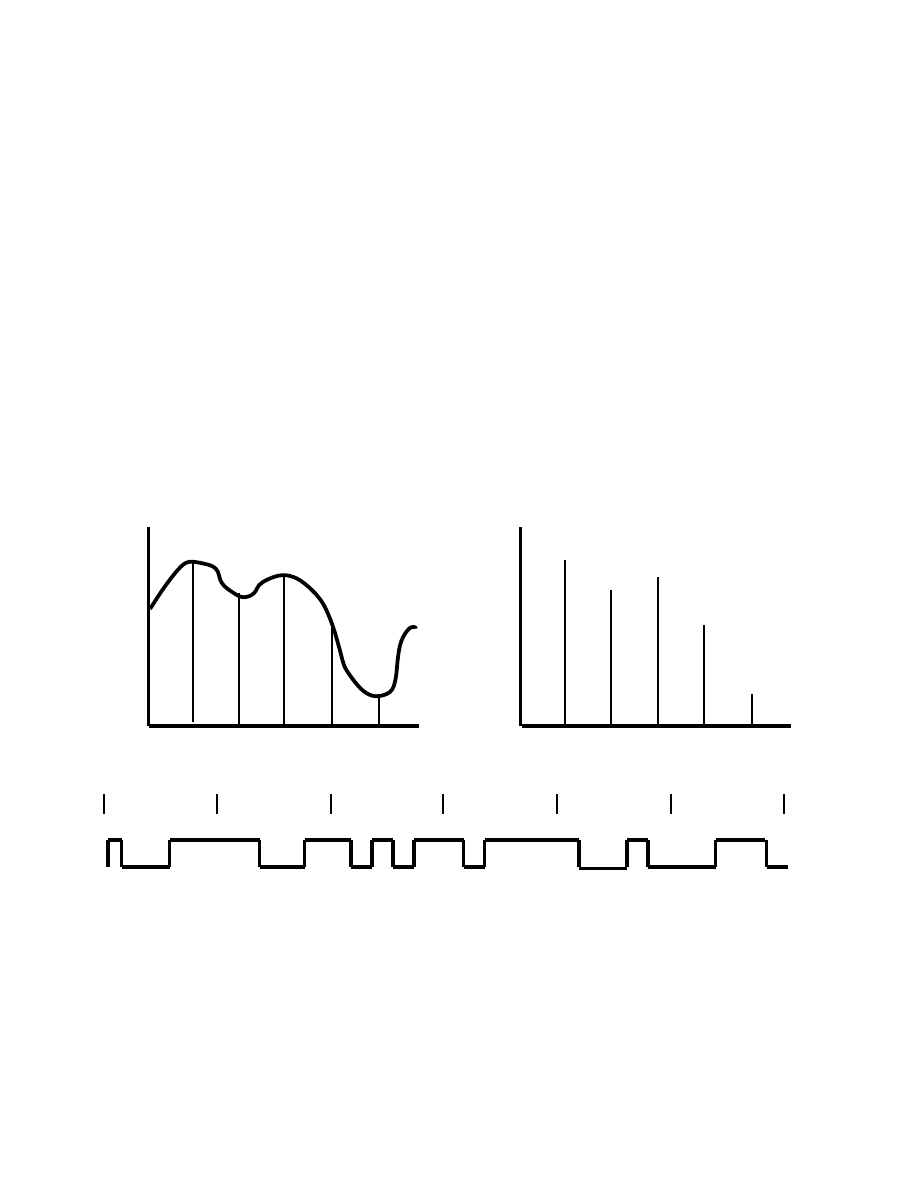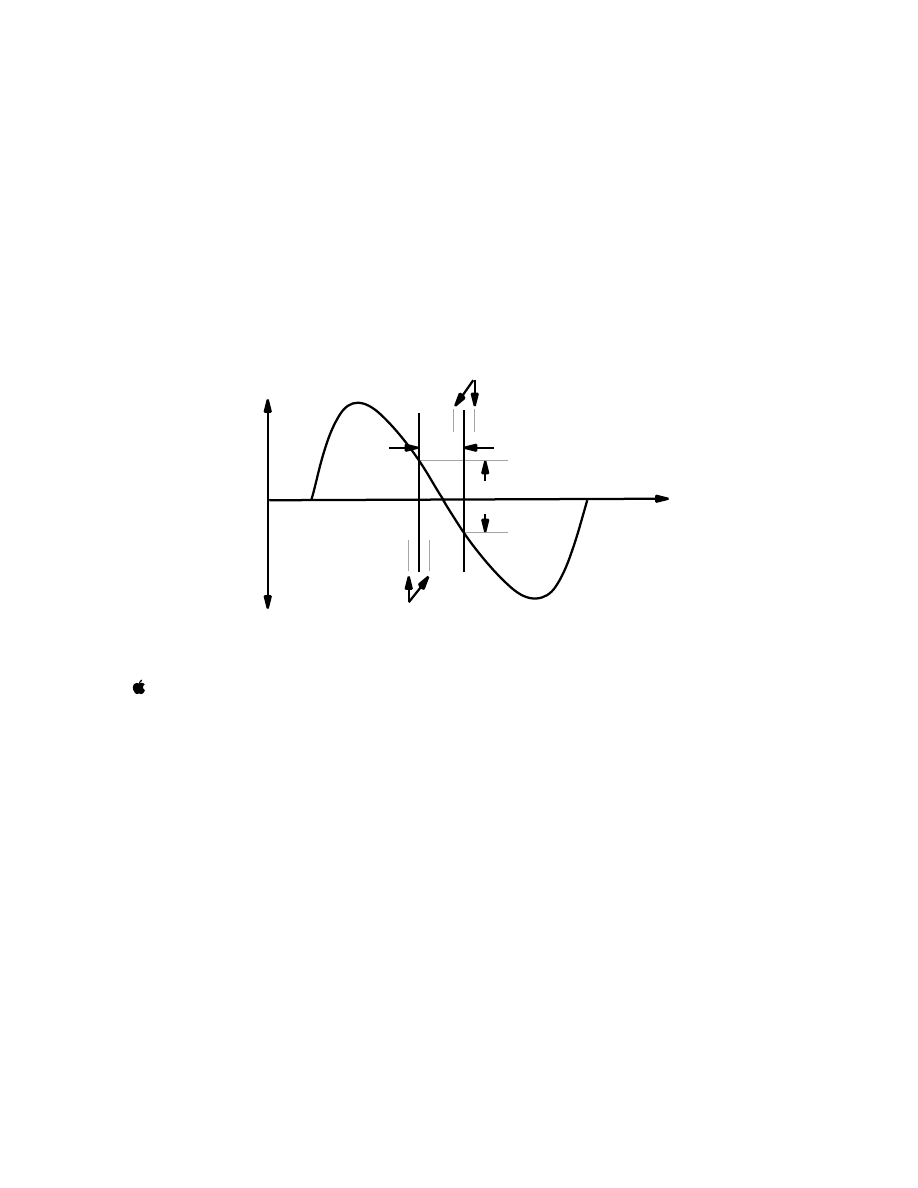ВУЗ: Казахская Национальная Академия Искусств им. Т. Жургенова
Категория: Учебное пособие
Дисциплина: Не указана
Добавлен: 03.02.2019
Просмотров: 12498
Скачиваний: 6

A
all-pass network: An all-pass network, also called an all-pass filter, is an electrical circuit with
a uniform amplitude response versus frequency response, but with a phase-shift which does
not vary in a linear relationship with frequency. (A pure time-delay device such as a digital
delay line will have a phase-shift which is directly proportional to frequency, i.e., its phase-
shift increases at a constant rate with frequency.) Complex filters often have significant phase
distortion because they are not phase linear, and an all-pass network can be designed to correct
phase anomalies without affecting the amplitude response.
alternating current (AC): An electrical current that periodically changes in direction. The
rate of alternation is called the frequency and is measured in cycles per second, or Hertz.
Audio signals are always alternating, the frequency corresponding to the pitches of the
sounds the signals represent. See Appendix B.
ambience: Ambience refers to the acoustical qualities of a listening space, such as reverbera-
tion, echoes, background noise, etc. On most music recordings, some of the ambience is re-
corded along with the music and are, to a certain extent, reproduced in the listening envi-
ronment, e.g., an organ in a cathedral. See room tone, walla, NC Curve.
ambience track: An edited roll of magnetic film, or one track of a multitrack tape, assembled
by the sound editor in preparation for the final mix of a motion picture or video production,
containing the series of room tones or ambient sounds of the various sets and locations in which
a scene was shot.
ambient noise: Ambient sound which is environmental in nature, such as traffic noise coming
through walls, heating or air conditioning, or other extraneous sounds which cannot be
turned off or removed.
ambient sound: Sounds such as reverberation, room tone, walla and atmospherics that form a
background to the main sound, usually in the context of a film soundtrack, taking place at any
given moment. The lack of ambient sound is noticeable because the human hearing system
expects it. See also ambient noise.
ambisonics: A system for the reproduction of a three-dimensional sound field, using two or
more transmission channels and four or more loudspeakers. See Soundfield microphone.
AMEI: Association o f Music Electronics Industries. A group that works with MMA on
MIDI standards, among other things.
ampere (A): The unit of measurement for electrical current in coulombs (6.25 x 10
18
electrons)
per second. There is one ampere in a circuit that has one ohm resistance when one volt is ap-
plied to the circuit. One should not speak of the “flow of current.” The current exists; the
charge flows. This is analogous to the current in a river, which consists of the flow of water.
AMPEX: A former manufacturer of videotape recorders, analog audio tape recorders, and
associated magnetic tape media. For the historic trivia fan, AMPEX is an acronym based on
the founder’s name, Alexander M. Poniatoff Excellence.
amplifier: An electrical circuit or device designed to increase the current, voltage, or power
of an applied signal. An amplifier is an active device and, strictly speaking, should always
increase the power of a signal; some amplifiers, such as certain distribution amplifiers, may
only reduce the impedance level of the signal for the purpose of driving long lines.

A
amplifier gain: The amount of amplification that an amplifier provides is called its gain. The
gain is a ratio of the input signal level to the output signal level and is simply a number.
Commonly expressed in dB, one should not express the voltage gain of an amplifier in dB
unless the input and output impedances are matched as the gain of a typical amplifier is not
related to its power output capability. For instance, if an amplifier has a voltage gain of 10, it
might be said that it has a gain of 20dB because it actually would raise the power level of a
signal by 20dB if the input and output impedances were matched. In practice, however, this
is very seldom the case, and the true power gain is usually very much different from what
would be predicted by the voltage gain. See impedance matching.
amplitude: The relative strength (amount) of a signal, without regard to its frequency con-
tent. Amplitude is measured by determining the amount of fluctuation in air pressure (of a
sound), voltage (of an electrical signal), or numerical data (in a digital application). When the
signal is in the audio range, amplitude is perceived as loudness. Amplitude is the measure-
ment of how much energy the sound has, i.e., the total change in air pressure during a single
cycle of the sound wave. Amplitude, or sound pressure, is measured in a scale called decibels
(dB). An increase of 3dB is equal to a doubling of a sound’s pressure. Amplitude can be ex-
pressed as either a negative or positive number, depending on the signals being compared.
See also magnitude, SPL.
amplitude errors: See frequency response errors, jitter.
Amplitude Modulation (AM): The instantaneous amplitude modulation of one signal by
another. This results in the formation of sidebands which contain the same information as the
original signals, but translated upwards and downwards in frequency. In AM radio trans-
mission, the audio signal is combined with a very high-frequency sine wave, called a carrier,
in such a way that the amplitude of the carrier is varied in exact response to the amplitude
and frequency of the signal. This is called the amplitude modulation of the carrier. The
modulated carrier is transmitted at high power where it is received by radio sets that are
tuned to the carrier frequency. The modulated carrier is then demodulated by a process
called detection, recovering the original signal. In radio, a circuit that does amplitude modu-
lation is also called a heterodyne.
amp/speaker simulator: A filter circuit that mimics the amplifier and loudspeaker voicing of
an electric guitar and amplifier system.
AM suppression: The ability of an FM tuner or receiver to reject amplitude modulation of the
received signal and be sensitive only to frequency modulation. Much of the interference and
noise in broadcasting appears as amplitude modulation, so a tuner with good AM suppres-
sion will have less distortion and noise than a tuner with poorer suppression. Also called AM
rejection.
anacrusis: See beat.

A
analog: Capable of exhibiting continuous fluctuations. An audio signal is an electrical rep-
lica, or analog, of the waveform of the sound it represents. The voltage of the signal varies
up and down (negatively and positively, in electrical terminology) the same way as the
sound pressure varies up and down at the microphone. In an analog synthesizer, such pa-
rameters as oscillator pitch and LFO speed are typically controlled by analog control voltages
rather than by digital data, and the audio signal is also an analog voltage. Compare with
digital.
analog recording: Any method of recording in which the recorded waveform is a continuous
representation of the original signal, e.g., conventional magnetic tape recording.
analog sequencer: A sequencer into which sounds for storage and playback are fed as analog
signals, via analog potentiometers.
analog synthesis: See subtractive synthesis.
analog-to-digital converter (ADC): Commonly abbreviated A/D converter or just A/D. A de-
vice that changes the continuous fluctuations in voltage from an analog device (such as a mi-
crophone) into digital information that can be stored or processed in a sampler, DSP, or digital
recording device.
Amplitude (Volts)
0
10
20
30
Time
Amplitude (Volts)
0
10
20
30
Time
25
21
23
18
6
19
1
0
0
1
1
1
1
1
0
0
1
1
1
0
0
1
1
1
0
1
1
1
0
0
0
0
0
0
1
1
19
25
21
23
18
6
Analog-to-Digital Conversion
Original Waveform
Sampled Waveform
•
•
•
•
•
•
•
•
•
•
•
anamorphic: The camera/projector lens system which squeezes an image, usually originally
in a 2:1 aspect ratio) onto film during shooting and “unsqueezes” it during projection. The
resulting viewed image has an aspect ratio twice as wide as what was originally recorded on
the film, e.g., if the image on the print is 2.2:1, the screen image will be 2.4:1. See also
CinemaScope, flat(4), ‘scope.
andante: At a “walking” speed: 76-94 bpm. Andantino can mean either a little faster or a
little slower than andante, although it more commonly denotes a little faster.

A
anechoic: Without echo. Said of an acoustic which is free-field, and specifically of a room
which is designed to produce no reverberation or other echo effects. This is achieved by
giving the walls very irregular surfaces of considerable and varying depths so that, in theory,
all sound waves which strike them are completely absorbed and not reflected. Anechoic
chambers are used to test audio equipment and for other types of acoustic and
electromagnetic research.
anharmonic: See inharmonic.
anhysteretic: See hysteresis.
anode: The anode in any electronic component, such as a silicon diode or a vacuum tube, is
the electrode normally connected to the positive voltage.
answer print: The first composite print made from the edited picture negative in 35mm film,
or the A- and B-rolls of a motion picture in 16mm. Each shot is exposed, color-balanced, and
otherwise processed. Further changes and corrections can be made in a second or third an-
swer print, if necessary. In many contracts, the delivery of the answer print is specified
because it means that post has ended and release printing can begin, although the release print
is usually made from an internegative, not the answer print. The answer print is not the
same as a black-track answer print which contains no soundtrack.
anti-aliasing filter: Before a signal is subjected to the process of A/D conversion, it must be
passed through a lowpass brick-wall filter to remove any components that are higher than the
Nyquist frequency. This is because it requires at least two samples per cycle to determine the
existence and strength of a frequency component or the A/D process will create aliased sig-
nals. See reconstruction filter, decimation, FIR, IIR.
anti-imaging filter: See reconstruction filter.
antinode: A place of minimum sound pressure level in a standing wave, as opposed to a node,
which is a maximum level.
antiphase: See out-of-phase, phase reversal.
antiphonal: A term used to describe music that is played or sung in alternating sections by
two separate groups of performers, widely separated.
AOR: Album-Oriented Rock or Adult Oriented Rock. A tendency of some FM radio stations
to play longer album tracks.

A
aperture time errors: In an A/D converter, the sample-and-hold circuit would ideally take
zero time to determine the level of the signal waveform and to hold this level until the next
sample is called for. However, it takes a finite time to charge the holding capacitor in the
sample-and-hold circuit, and this is called the aperture time. Because the time required to estab-
lish a new value of charge depends on the amount of change in the signal level from one
sample to the next, the aperture time will vary with the rate of change in signal level, in-
creasing for high-level, high-frequency signals. The starting time of the sampling aperture is
also slightly uncertain, and this is called jitter. In other words, lack of precision in the sam-
pling time leads to amplitude errors in rapidly changing signals. The errors involve aperture
time, uncertainty in aperture time, and jitter. The result is distortion of the sampled signal
which rises with frequency.
Amplitude
Aperture Time
Amplitude
Uncertainty
Time
Jitter
Aperture Uncertainty
Aperture Time Errors
Apple ( ) menu: The main menu on a Mac, used to access system utilities (such as Keycaps),
applications, files, and control panels. This is the equivalent of the Start
menu on a PC-type
system.
AppleScript: A system-wide macro facility on Macs which gives operating system-level
control for compatible applications.
APPV: Audio Post-Production for Video. The process of preparing the individual
soundtracks and the final mix for a videotaped production.
APRS: Association of Professional Recording Studios. An industry body set up to ensure a
uniform standard of service and practice in the area of sound recording.